-
 Bitcoin
Bitcoin $105,278.9859
4.61% -
 Ethereum
Ethereum $2,414.7741
8.20% -
 Tether USDt
Tether USDt $1.0007
0.05% -
 XRP
XRP $2.1600
7.53% -
 BNB
BNB $639.5433
3.75% -
 Solana
Solana $144.3830
9.37% -
 USDC
USDC $1.0001
0.02% -
 TRON
TRON $0.2742
3.84% -
 Dogecoin
Dogecoin $0.1640
8.57% -
 Cardano
Cardano $0.5811
7.49% -
 Hyperliquid
Hyperliquid $37.2466
5.28% -
 Sui
Sui $2.8243
14.84% -
 Bitcoin Cash
Bitcoin Cash $460.8816
2.22% -
 Chainlink
Chainlink $12.9580
11.75% -
 UNUS SED LEO
UNUS SED LEO $9.1359
1.23% -
 Avalanche
Avalanche $18.2302
10.30% -
 Stellar
Stellar $0.2463
7.80% -
 Toncoin
Toncoin $2.9151
7.18% -
 Shiba Inu
Shiba Inu $0.0...01163
9.79% -
 Hedera
Hedera $0.1532
14.01% -
 Litecoin
Litecoin $85.3310
6.29% -
 Monero
Monero $308.8215
2.90% -
 Ethena USDe
Ethena USDe $1.0007
0.03% -
 Polkadot
Polkadot $3.4259
9.42% -
 Dai
Dai $1.0002
0.01% -
 Bitget Token
Bitget Token $4.1742
3.19% -
 Uniswap
Uniswap $6.8272
8.53% -
 Pepe
Pepe $0.0...09939
12.29% -
 Pi
Pi $0.5358
6.03% -
 Aave
Aave $257.3092
12.83%
Is the Fibonacci time window accurate? How to use it in combination with price patterns?
The Fibonacci time window helps crypto traders predict potential market reversals by analyzing time intervals based on the Fibonacci sequence.
Jun 24, 2025 at 03:49 pm
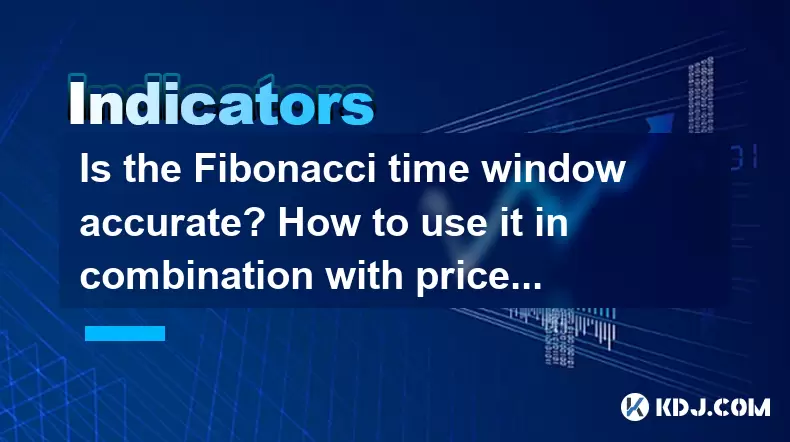
Understanding the Fibonacci Time Window Concept
The Fibonacci time window is a technical analysis tool derived from the Fibonacci sequence, commonly used in financial markets, including cryptocurrency trading, to predict potential reversal or continuation points based on time rather than price. Unlike traditional Fibonacci retracement levels that focus on price movements, the time window focuses on identifying key moments when significant market shifts might occur.
Traders often apply this technique by measuring the duration between two major price swings — typically a high and a low — and then projecting future dates where similar volatility may arise. The idea is that market cycles repeat themselves at intervals corresponding to Fibonacci numbers (e.g., 1, 2, 3, 5, 8, 13... days or hours). However, it’s crucial to understand that while many traders find value in this method, its accuracy can vary depending on the asset and market conditions.
How Accurate Is the Fibonacci Time Window in Cryptocurrency Trading?
In the context of crypto trading, the accuracy of the Fibonacci time window depends heavily on how it's applied and what other tools are used alongside it. Since cryptocurrency markets operate 24/7 and are highly volatile, the timing signals generated by the Fibonacci time window can sometimes align with actual turning points, but they should never be relied upon in isolation.
Many experienced traders note that the Fibonacci time window tends to perform better when combined with other forms of analysis such as volume spikes, candlestick patterns, or support/resistance levels. It also works best in trending markets rather than during sideways consolidation phases. While some traders swear by its predictive power, others view it as more of a probabilistic guide than a definitive signal.
It's important to backtest any strategy involving Fibonacci time windows using historical data before applying it in live trading environments. Tools like TradingView allow users to overlay Fibonacci time zones on crypto charts for better visual interpretation.
Combining Fibonacci Time Windows with Price Patterns
To effectively combine Fibonacci time windows with price patterns, traders need to identify both temporal and structural elements that suggest a possible change in trend. Here’s how you can do it step-by-step:
- Identify a strong price swing: Look for a clear uptrend or downtrend with a well-defined starting and ending point.
- Draw Fibonacci time zones: Use your charting platform to draw vertical lines spaced according to Fibonacci intervals starting from the beginning of the identified swing.
- Look for confluence areas: These are points where a Fibonacci time zone intersects with a known price pattern such as a head and shoulders, double top/bottom, or triangle formation.
- Monitor volume and momentum indicators: If the projected time zone coincides with increasing volume or a divergence in momentum indicators like RSI or MACD, the probability of a valid reversal increases.
This combination helps filter out false signals and enhances the likelihood of identifying high-probability trade setups.
Practical Steps to Apply Fibonacci Time Zones on Crypto Charts
Applying Fibonacci time zones requires attention to detail and proper setup. Here’s how to execute it effectively:
- Select a reliable charting tool: Platforms like TradingView, Binance native charts, or MetaTrader offer built-in Fibonacci tools.
- Choose a timeframe: Short-term traders may use hourly charts, while long-term investors could opt for daily or weekly charts.
- Mark the start and end of a price swing: This is usually a recent significant high to low or vice versa.
- Apply the Fibonacci time zone tool: Click on the starting point and drag to the endpoint. The tool will automatically generate vertical lines at Fibonacci intervals.
- Observe price behavior around these zones: Pay close attention to whether the price stalls, reverses, or accelerates near these lines.
Note that the Fibonacci time window does not provide entry or exit levels directly; instead, it gives a timeline within which traders should be extra vigilant about potential changes in direction.
Common Mistakes to Avoid When Using Fibonacci Time Windows
Despite their usefulness, Fibonacci time windows can lead to poor decisions if misused. Here are common pitfalls to avoid:
- Overfitting the chart: Trying to force Fibonacci time zones to fit every swing can result in cluttered and misleading analysis.
- Ignoring market context: Failing to consider broader market sentiment or macro events affecting cryptocurrencies can invalidate Fibonacci projections.
- Using it without confirmation: Relying solely on Fibonacci time zones without confirming with price action or volume can lead to false entries.
- Neglecting risk management: Even if a Fibonacci time zone aligns with a pattern, setting stop-loss orders and managing position sizes remains critical.
By avoiding these mistakes, traders can enhance the effectiveness of Fibonacci time windows as part of a holistic trading strategy.
Frequently Asked Questions (FAQ)
Q: Can Fibonacci time windows be used across all cryptocurrencies?
Yes, Fibonacci time windows can be applied to any tradable asset, including Bitcoin, Ethereum, and altcoins. However, their effectiveness may vary depending on liquidity and volatility.
Q: Do Fibonacci time windows work better on certain timeframes?
They tend to be more effective on higher timeframes such as daily or weekly charts due to reduced noise compared to intraday charts.
Q: How do I know if a Fibonacci time zone is likely to produce a valid signal?
A valid signal is more probable when the time zone aligns with a key price level, pattern, or indicator divergence. Always look for multiple confirmations.
Q: Are there alternative methods similar to Fibonacci time windows?
Yes, Gann time cycles and Elliott Wave theory also attempt to forecast market turns based on time and structure, though they differ in methodology.
Disclaimer:info@kdj.com
The information provided is not trading advice. kdj.com does not assume any responsibility for any investments made based on the information provided in this article. Cryptocurrencies are highly volatile and it is highly recommended that you invest with caution after thorough research!
If you believe that the content used on this website infringes your copyright, please contact us immediately (info@kdj.com) and we will delete it promptly.
- XRP Price Surge: Latest News and Analysis – Can XRP Reach New Heights?
- 2025-06-24 20:45:12
- Stablecoin Surge in South Korea: Kakao Pay's Venture and the Stock Rally
- 2025-06-24 20:25:13
- DOT Miners, Middle East, and Investors: Navigating Uncertainty
- 2025-06-24 20:25:13
- Mastercard, Fiserv, and Stablecoin Adoption: A New Era for Digital Payments?
- 2025-06-24 20:37:14
- Binance, TradFi, Strategy: Bridging the Gap in the New Era of Digital Finance
- 2025-06-24 20:37:14
- Little Pepe: The Next Ethereum 9000% Token Pump?
- 2025-06-24 18:45:12
Related knowledge

What does it mean when the stochastic indicator repeatedly fluctuates at the 50 horizontal line?
Jun 24,2025 at 09:08pm
Understanding the Stochastic Indicator in Cryptocurrency TradingThe stochastic indicator is a popular momentum oscillator used by traders to identify potential trend reversals and overbought or oversold conditions. In cryptocurrency trading, where price movements can be highly volatile, understanding how this tool behaves becomes crucial for making info...
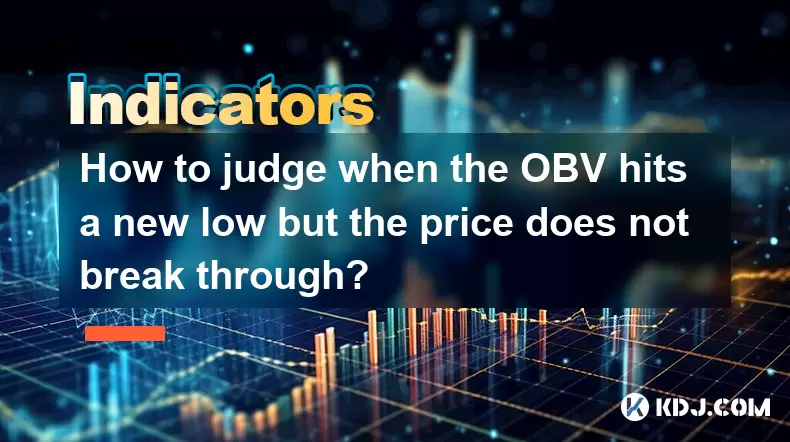
How to judge when the OBV hits a new low but the price does not break through?
Jun 24,2025 at 07:56pm
Understanding the Basics of OBV and Price ActionOn-Balance Volume (OBV) is a momentum indicator that uses volume flow to predict changes in stock or cryptocurrency prices. The core principle behind OBV is that volume often precedes price movement. When OBV hits a new low, but the price does not break through its previous support level, this can indicate...
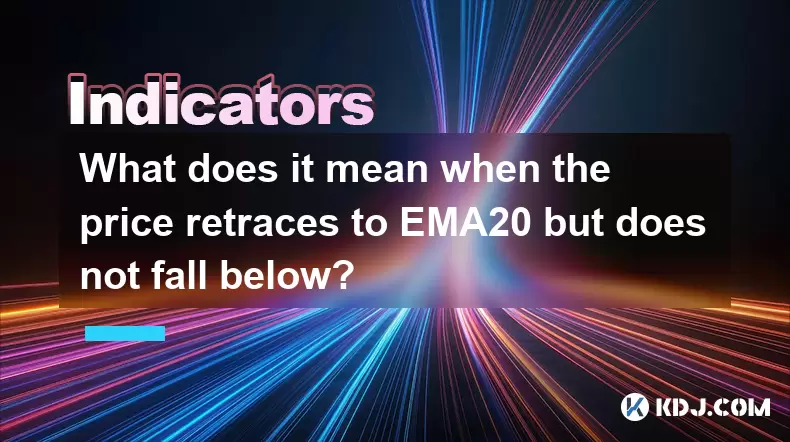
What does it mean when the price retraces to EMA20 but does not fall below?
Jun 24,2025 at 08:49pm
Understanding the EMA20 Indicator in Cryptocurrency TradingThe Exponential Moving Average (EMA) with a 20-period setting, commonly referred to as EMA20, is one of the most widely used technical indicators in cryptocurrency trading. It gives more weight to recent price data, making it more responsive to current price movements compared to simple moving a...
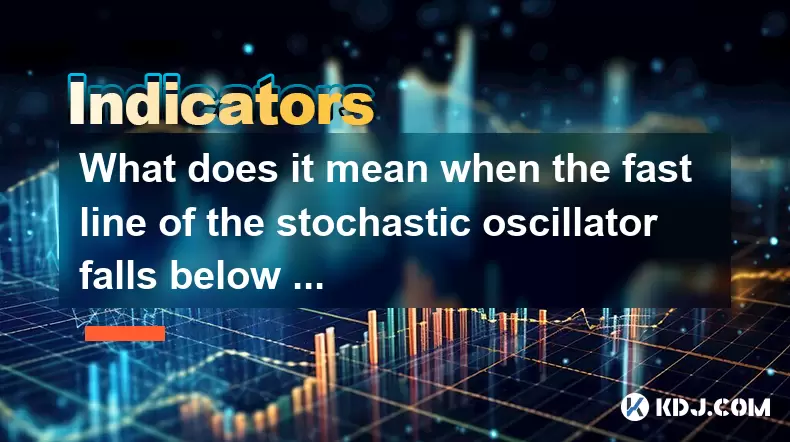
What does it mean when the fast line of the stochastic oscillator falls below the slow line?
Jun 24,2025 at 07:07pm
Understanding the Stochastic OscillatorThe stochastic oscillator is a momentum indicator used in technical analysis to assess overbought or oversold conditions in financial markets, including cryptocurrencies. It consists of two lines: the fast line (typically %K) and the slow line (typically %D). The fast line represents the current closing price relat...
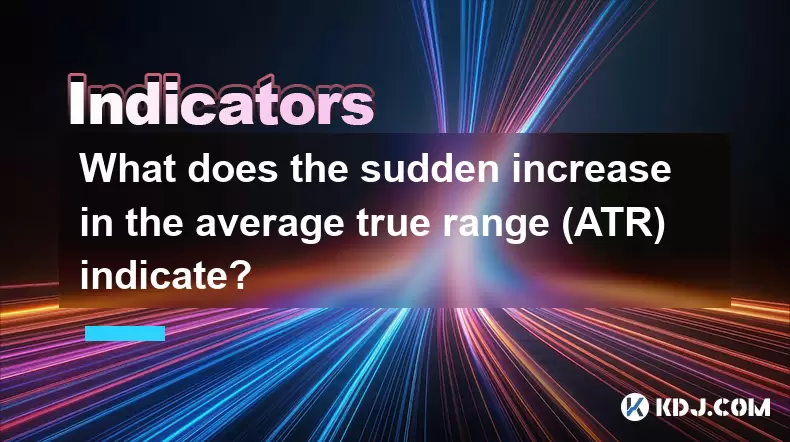
What does the sudden increase in the average true range (ATR) indicate?
Jun 24,2025 at 06:42pm
Understanding the Average True Range (ATR) in Cryptocurrency TradingThe Average True Range (ATR) is a technical indicator used by traders to measure market volatility. In the context of cryptocurrency, where prices can swing dramatically within short periods, ATR becomes an essential tool for assessing potential price movements. The ATR does not indicat...
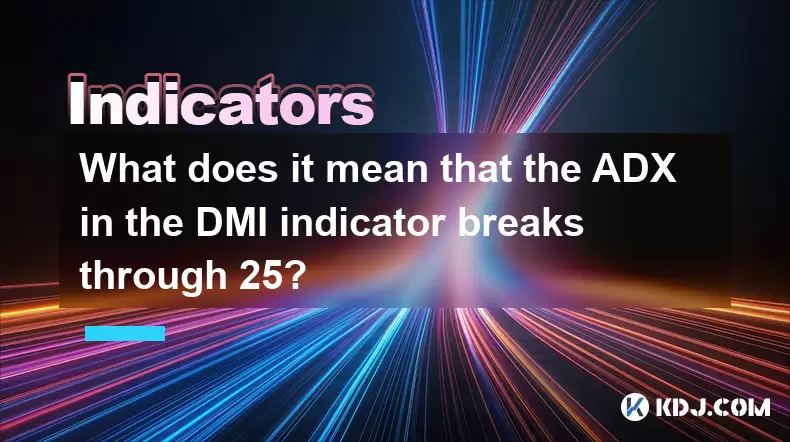
What does it mean that the ADX in the DMI indicator breaks through 25?
Jun 24,2025 at 06:21pm
Understanding the DMI Indicator and Its ComponentsThe Directional Movement Index (DMI) is a technical analysis tool used to identify the strength and direction of a trend in cryptocurrency markets. The indicator consists of two primary lines: the Positive Directional Indicator (+DI) and the Negative Directional Indicator (-DI). These lines help traders ...

What does it mean when the stochastic indicator repeatedly fluctuates at the 50 horizontal line?
Jun 24,2025 at 09:08pm
Understanding the Stochastic Indicator in Cryptocurrency TradingThe stochastic indicator is a popular momentum oscillator used by traders to identify potential trend reversals and overbought or oversold conditions. In cryptocurrency trading, where price movements can be highly volatile, understanding how this tool behaves becomes crucial for making info...

How to judge when the OBV hits a new low but the price does not break through?
Jun 24,2025 at 07:56pm
Understanding the Basics of OBV and Price ActionOn-Balance Volume (OBV) is a momentum indicator that uses volume flow to predict changes in stock or cryptocurrency prices. The core principle behind OBV is that volume often precedes price movement. When OBV hits a new low, but the price does not break through its previous support level, this can indicate...

What does it mean when the price retraces to EMA20 but does not fall below?
Jun 24,2025 at 08:49pm
Understanding the EMA20 Indicator in Cryptocurrency TradingThe Exponential Moving Average (EMA) with a 20-period setting, commonly referred to as EMA20, is one of the most widely used technical indicators in cryptocurrency trading. It gives more weight to recent price data, making it more responsive to current price movements compared to simple moving a...

What does it mean when the fast line of the stochastic oscillator falls below the slow line?
Jun 24,2025 at 07:07pm
Understanding the Stochastic OscillatorThe stochastic oscillator is a momentum indicator used in technical analysis to assess overbought or oversold conditions in financial markets, including cryptocurrencies. It consists of two lines: the fast line (typically %K) and the slow line (typically %D). The fast line represents the current closing price relat...

What does the sudden increase in the average true range (ATR) indicate?
Jun 24,2025 at 06:42pm
Understanding the Average True Range (ATR) in Cryptocurrency TradingThe Average True Range (ATR) is a technical indicator used by traders to measure market volatility. In the context of cryptocurrency, where prices can swing dramatically within short periods, ATR becomes an essential tool for assessing potential price movements. The ATR does not indicat...

What does it mean that the ADX in the DMI indicator breaks through 25?
Jun 24,2025 at 06:21pm
Understanding the DMI Indicator and Its ComponentsThe Directional Movement Index (DMI) is a technical analysis tool used to identify the strength and direction of a trend in cryptocurrency markets. The indicator consists of two primary lines: the Positive Directional Indicator (+DI) and the Negative Directional Indicator (-DI). These lines help traders ...
See all articles
























































































